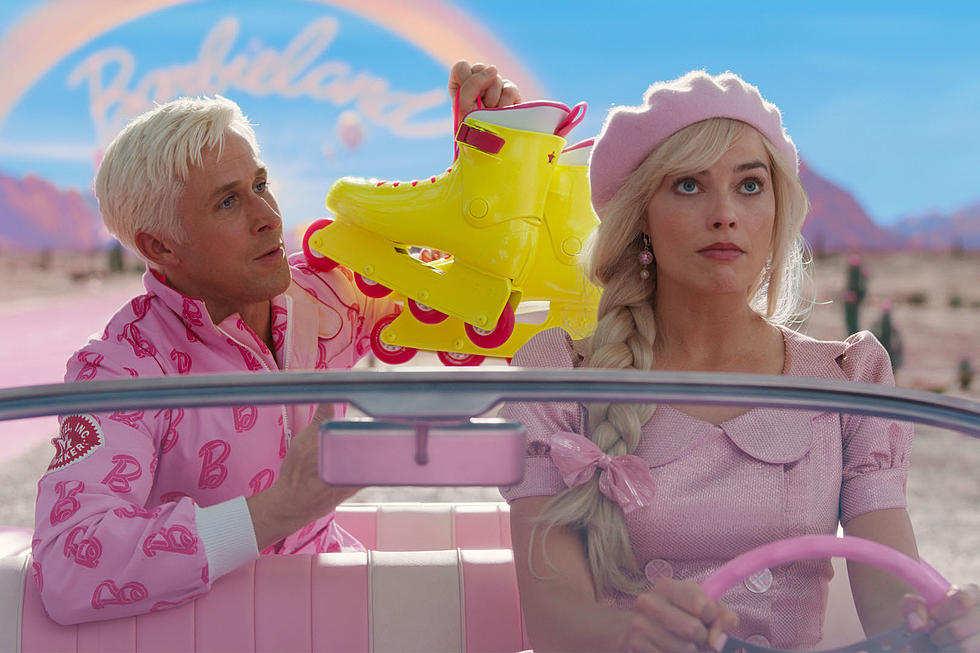
‘Isle of Dogs’ Review: Wes Anderson Made a Very Good Film About Such Very Good Boys
Wes Anderson is known for a lot of things: An idiosyncratic and detail-oriented style, masterful use of color, nice dress socks, keeping Bill Murray employed, and killing (fictional) dogs. In 2012, following the release of Moonrise Kingdom, a New Yorker piece asked, “Does Wes Anderson Hate Dogs?” Perhaps it’s no coincidence that his latest effort, a stop-motion adventure set in Japan, is called Isle of Dogs. When you say it out loud, the title itself refutes the notion that Anderson has it out for man’s best friend.
As the name implies, Isle of Dogs is an exceedingly canine-centric story: In the near future, in the fictional Megasaki City, the “canine flu” has ravaged the dog population. When the city’s ruthless mayor (Kunichi Nomura) issues an executive decree to have all dogs sent to an offshore garbage dump known as Trash Island, the mayor’s 12-year-old ward, Atari Kobayashi (Koyu Rankin), sets off to rescue his guardian and best friend, Spots (Liev Schreiber). Atari steals a miniature Junior-Turbo Prop plane and crashes on the island; the native dogs dub this stranger in a strange land “the little pilot.”
Joining him on this epic odyssey through literal wastelands is a pack of neurotic dogs: Rex (Edward Norton), Boss (Bill Murray), Duke (Jeff Goldblum), King (Bob Balaban), and a jaded former stray known as Chief (Bryan Cranston). With mainland support from a young foreign exchange student from Ohio named Tracy (Greta Gerwig) and a pair of determined scientists, Atari and his pack embark on a perilous journey to find his beloved Spots.
Anderson’s second stop-motion effort may ultimately surpass his first (Fantastic Mr. Fox) — the animation is astonishingly detailed, particularly the giant mountains of garbage on Trash Island. It’s truly breathtaking. (“Breathtaking garbage” is a description you’d only expect to hear ironically, when discussing something like Gods of Egypt.) Like Fantastic Mr. Fox, Anderson and his team of animators have chosen to embrace what’s known in the trade as “boiling”; the result of an animator’s touch. Where some contemporary stop-motion animated films have chosen to remove any and all traces of human involvement, Anderson chooses to leave it behind.
You see this in the way hairs and fabrics shift in every other frame, as if moved by some invisible wind. It gives the characters texture, transforming a highly-fictional setting and format into a world that is tangible and real; it immerses the viewer in the reality of the unreal. Maybe the truest magic of this particular style of stop-motion animation is how it lends surprising emotional depth.
For a director who is so exacting and detail-oriented, such an imperfect concept may seem incongruous with Anderson’s style. But it’s quite the opposite. There’s an idiosyncratic vibe to the animated world of Isle of Dogs that marries beautifully with Anderson’s own tonal tendencies.
And though there is plenty of offbeat humor in Isle of Dogs, it is ultimately an inspired and moving coming-of-age story set — like Moonrise Kingdom — at a pivotal age in a boy’s life. It’s also a love letter to dogs and everything they stand for: Loyalty, unconditional love, unparalleled companionship. Like many Anderson films, Isle of Dogs is a story of outcasts united by similar beliefs and desires — here their differences are more difficult (and often hilarious). Not only is there an interspecies barrier, but a language one, as well.
English-speaking actors voice the dog characters (and a few English-speaking humans), but the Japanese characters are voiced entirely by native actors — many of whom speak little to no English throughout the film. Viewers are informed, via title card, at the beginning of the film that an interpreter will be featured when available. That translator, voiced by Frances McDormand, appears primarily during scenes set at public events. Otherwise, the majority of Japanese is spoken without subtitles or translation; though the narrative implications are easy enough to parse, it’s a delightful choice, and one that feels like a genuine effort to honor the Japanese actors and their heritage.
Unlike many Anderson films, however, this one is somewhat political. It’s evident in the basic plot description; in Mayor Kobayashi’s refusal to do something so simple, that costs him so little, to help so many. Instead, he effectively deports them, convincing an entire city population to hate dogs for the same senseless reasons that he does. (He’s a cat person, by the way.)
All these little touches and directorial choices make Isle of Dogs feel exceptionally special. As someone who cites Wes Anderson as her favorite filmmaker, it’s difficult to rank his latest effort among his previous films — for now, at least. In the long run, it may very well start to feel like one of the best and most imaginative stories in his filmography. In the short term, Isle of Dogs is the epitome of a heart-warming adventure; a funny, fantastic and thought-provoking tale set in a world where one man’s trash is another man’s best friend.
More From ScreenCrush









